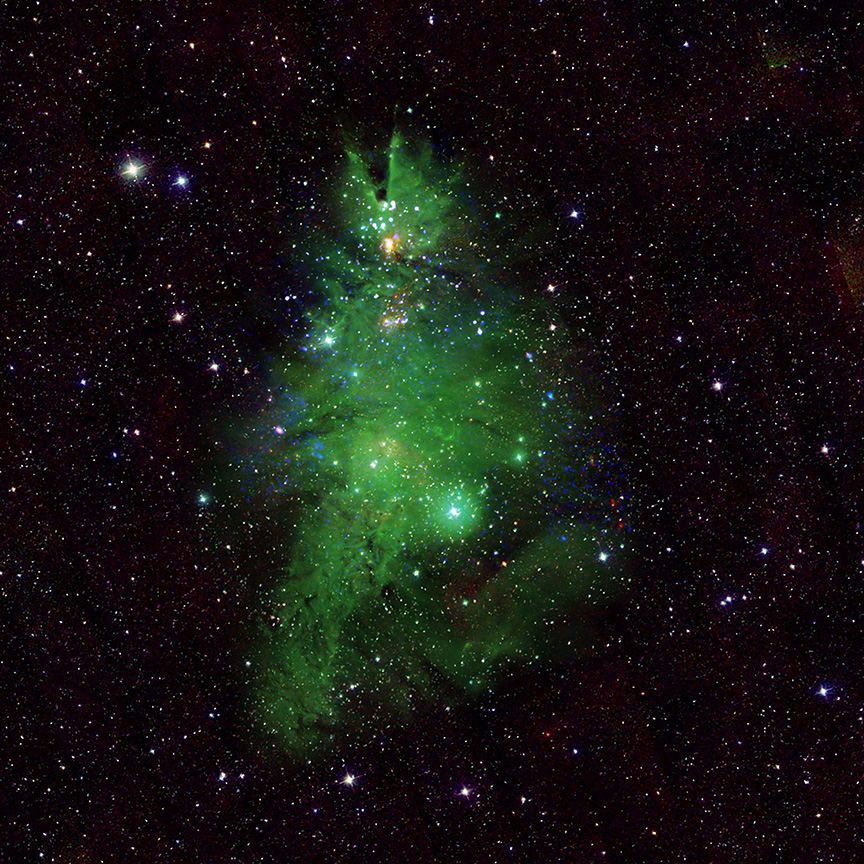
 Credit: X-ray: NASA/CXC/SAO; Optical: T.A. Rector (NRAO/AUI/NSF and NOIRLab/NSF/AURA) and B.A. Wolpa (NOIRLab/NSF/AURA); Infrared: NASA/NSF/IPAC/CalTech/Univ. of Massachusetts; Image Processing: NASA/CXC/SAO/L. Frattare & J.Major
Credit: X-ray: NASA/CXC/SAO; Optical: T.A. Rector (NRAO/AUI/NSF and NOIRLab/NSF/AURA) and B.A. Wolpa (NOIRLab/NSF/AURA); Infrared: NASA/NSF/IPAC/CalTech/Univ. of Massachusetts; Image Processing: NASA/CXC/SAO/L. Frattare & J.Major
Evergreen
Stars like to cluster together when they form. Some of the groups are long-lasting, but some associations, quite close when new, tend to drift apart with time. The image above shows a cluster known by its catalogue name, NGC 2264. This star cluster is about 2,500 light years from us, and contains thousands of stars ranging in mass from a fraction to about 10 times the mass of the Sun. Since cluster stars typically have the same age, studying star clusters help define how stars of different mass change as they age. NGC 2264 is immersed in a glowing cloud of gas, the remnant of the stuff out of which the stars formed, mixed with effluence from the stars themselves. This festive image, a combination of artistic and scientific sensibilities, shows the emission nebula colored green, with points of stellar X-ray emission in blue, purple and white, and infrared emission from stars and heated dust in red, green and blue. The cluster stars twinkle in X-rays, short outbursts of high energy radiance from stellar flares on small, magnetically active cluster stars. This cosmic tree is crowned in this aspect by the Cone Nebula, and not too far away is the Snowflake Nebula. Happy cosmic holidays!
Published: December 25, 2023
<
HEA Dictionary ● Archive
● Search HEAPOW
● Other Languages
● HEAPOW on Facebook
● Download all Images
● Education ● HEAD
>

Each week the HEASARC
brings you new, exciting and beautiful images from X-ray and Gamma ray
astronomy. Check back each week and be sure to check out the HEAPOW archive!
Last modified Tuesday, 27-Feb-2024 10:10:12 EST


